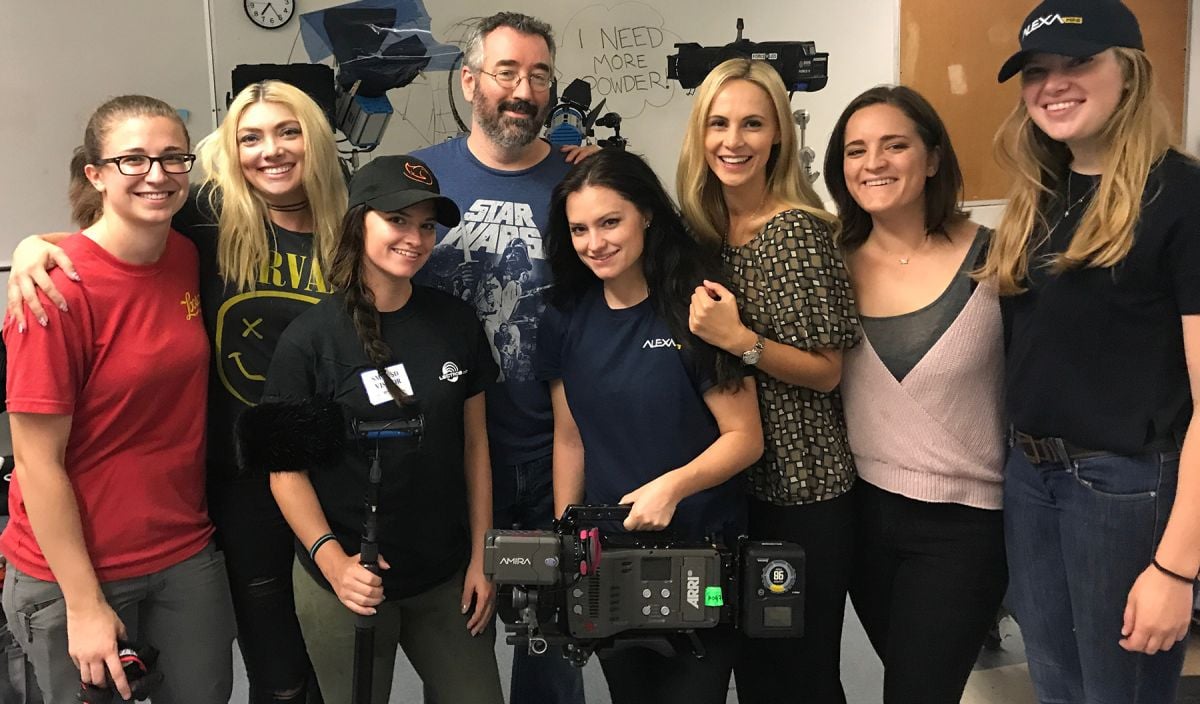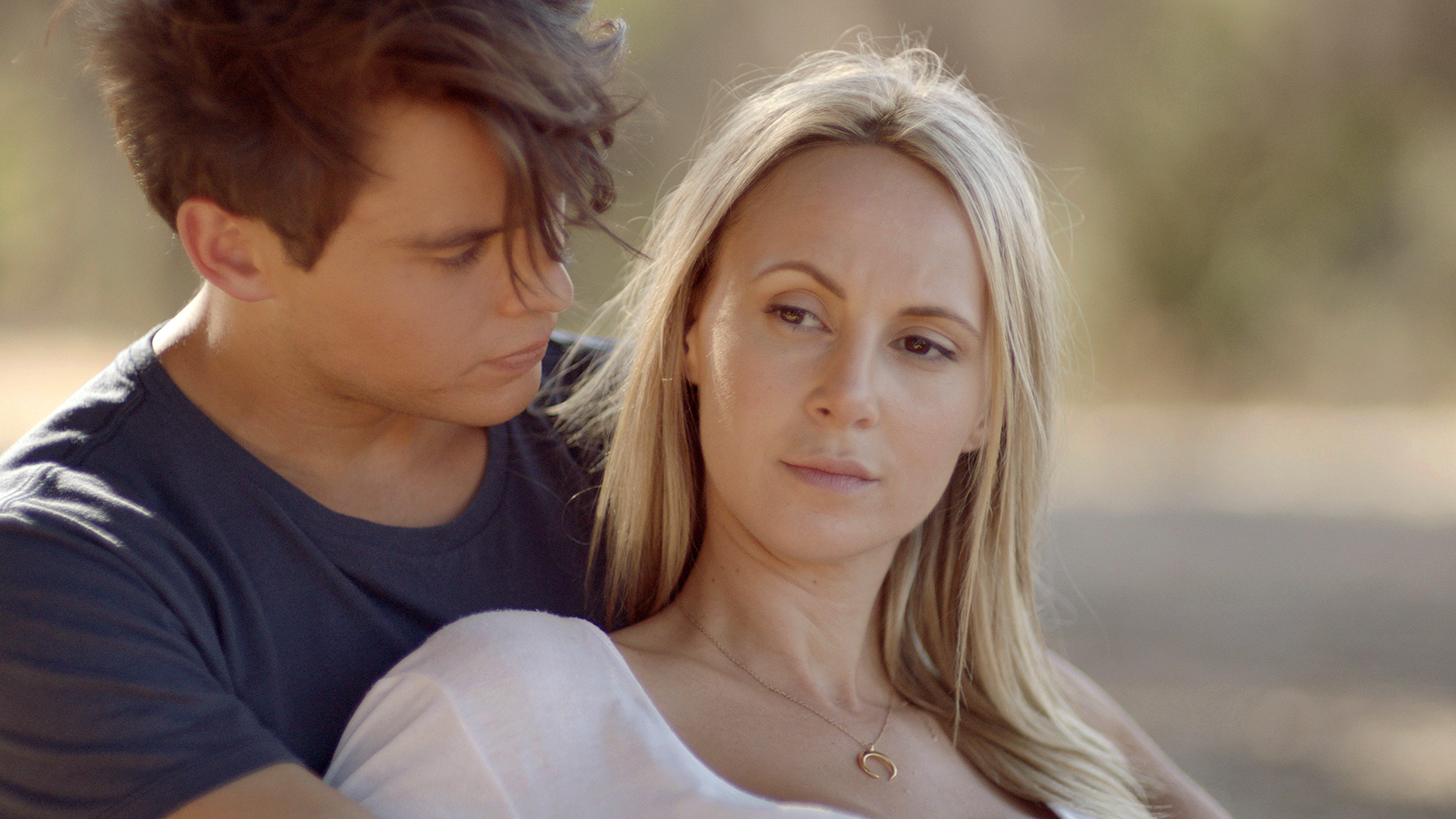
Overcoming Limited Resources on My First Feature: Before the Dawn
It’s easy to feel intimidated when you’re facing your first feature, and it’s especially daunting when you know you’ll have limited crew and resources.

In the few years that I have passionately pursued cinematography as a career, American Cinematographer has been a mainstay of my education. It’s fascinating and inspiring to learn about the work being done by the cinematographers I admire. At the same time, I know the chances are low that my next job will allow me a 90-day schedule or a perm full of space lights and Maxi-Brutes. So I want to talk about the challenges of working with an incredibly short schedule and extremely limited resources — and how I created something I’m proud of within those constraints. I hope other AC readers in similar positions will read this and think, “I can do that.”
The project, a feature titled Before the Dawn, follows Lila (Alana de Freitas), a teacher who has escaped an abusive marriage and is looking for a fresh start. She moves to a small town and lands a position teaching at a Catholic high school, where she meets Jason (Jared Scott), a troubled student who shows heart and talent. After Lila begins to tutor him, their relationship becomes flirtatious, and the two struggle with whether to cross the line.
The director, Jay Holben, approached me to shoot this micro-budget movie about a month before production began. The biggest selling point for me was, well, Jay. We had collaborated on a black-and-white music video for The Summit, and I knew that Jay, a former cinematographer, was a filmmaker I not only liked to work with but also could learn from — an ideal director for a cinematographer shooting her first feature.

Our gear also had some selling points. We would have Canon FDs (rehoused by GL Optics) on loan from Jay’s friend Christopher Probst, ASC. Paired with my Arri Amira — shooting at 3.2K — they would enable us to create a soft, low-contrast, high-quality image. We would also have some accessories generously provided by Camtec, as well as a pink Dutti Dolly from Matthews Studio Equipment.
My main concern was our lighting package. I didn’t have any lighting instruments of my own to bring onboard. Jay had a basic Arri tungsten Fresnel kit (a 1K, 650-watt, 300-watt and two 150s), along with two 4' four-bank Kino Flos. BB&S Lighting provided some fixtures: two of their Area 48 LED units, several single LED tubes and a BB&S Force V 5,600K-balanced LED ellipsoidal spots. The Force V was my favorite — I was surprised by its punch, and it elevated every scene in which I put it to use. (I often played it as a beam of sunlight through a window in day interiors.) I also picked up two 2' Digital Sputnik Voyager prototype LED tube fixtures for the first day of filming, when we planned to shoot a nighttime driving scene.


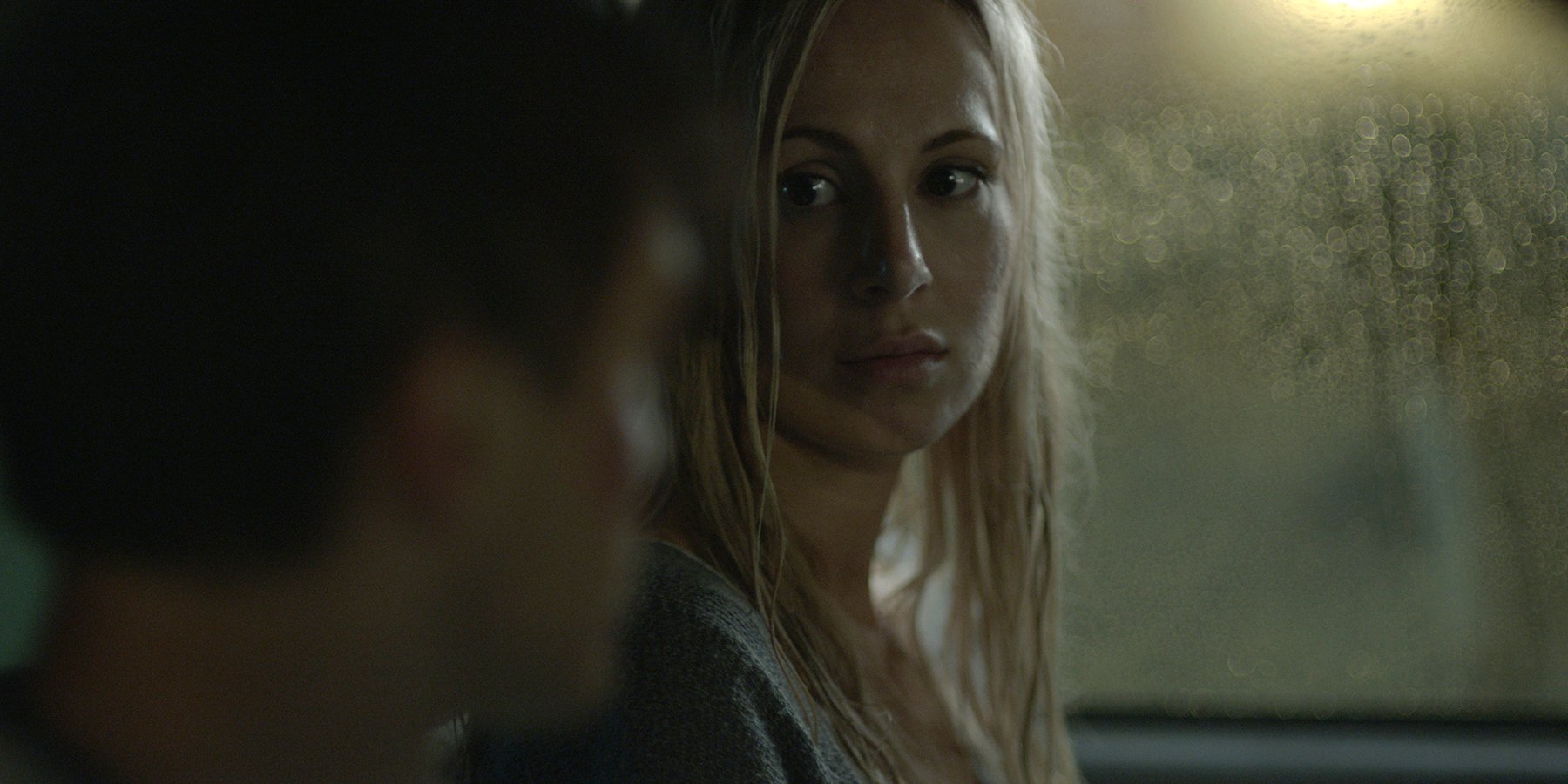
Jay and I constructed our own dimmers from the tail ends of extension cords and household rheostats from Home Depot. We also created two 6'x6' frames out of 1" PVC to hold up a king-size, fitted white bedsheet to act as bounce or diffusion. We had C-stands, combo stands and various grip equipment from Matthews. All in all, it seemed we had a fair amount of equipment to take on the filming.
I started preproduction by watching film clips with Jay and discussing what we wanted the look to be. Most of the color in our film would be cool, but the romantic scenes between Lila and Jason would be warm; this would visually separate the characters’ desires from the restrictions of their everyday lives.
Jay originally wanted an aspect ratio of 2.39:1, but I didn’t feel it was the right frame for this film, so I pitched an image with more height. Jay storyboarded some frames in 2.39 and agreed it was not the right fit. We settled on a midpoint between 1.85 and 2.39 — 2.0:1.
For our night-driving work on the first day of production, we elected to have a skeleton crew: the two lead actors; Jay; the sound mixer, Manuel López Cano; and me. I wanted to use the Voyagers to punctuate a far-side key for each passenger from outside the windows, so we rigged a Voyager to each side of the car. The first day of a production brings a unique set of obstacles, and one of ours was that the night driving called for rain. To accomplish this effect while we were moving, Jay rigged the top of the picture car with four large Hudson sprayers and secured the nozzles to spray out in front of the windshield and at the side windows as we drove. So the Voyagers not only lit the talent, but also backlit the rain so it would read on camera.
Because of the very short prep — I received the script 10 days before we commenced shooting — we saw very few locations ahead of time and often had to roll with the punches when we arrived. The second day was an example of this. We arrived at the location for Jason’s home, and the house was more compact than all of us expected. In particular, the extremely small kitchen featured a countertop with stools for seating, and our script called for scenes with the family around the dinner table. With some careful blocking and staging, we were able to make the location work. The kitchen counter opened out to the living room, so we could position the camera outside the kitchen and shoot in. In framing close-ups, we tried to get the most interesting view possible and keep the scenes visually engaging in a very tight space.
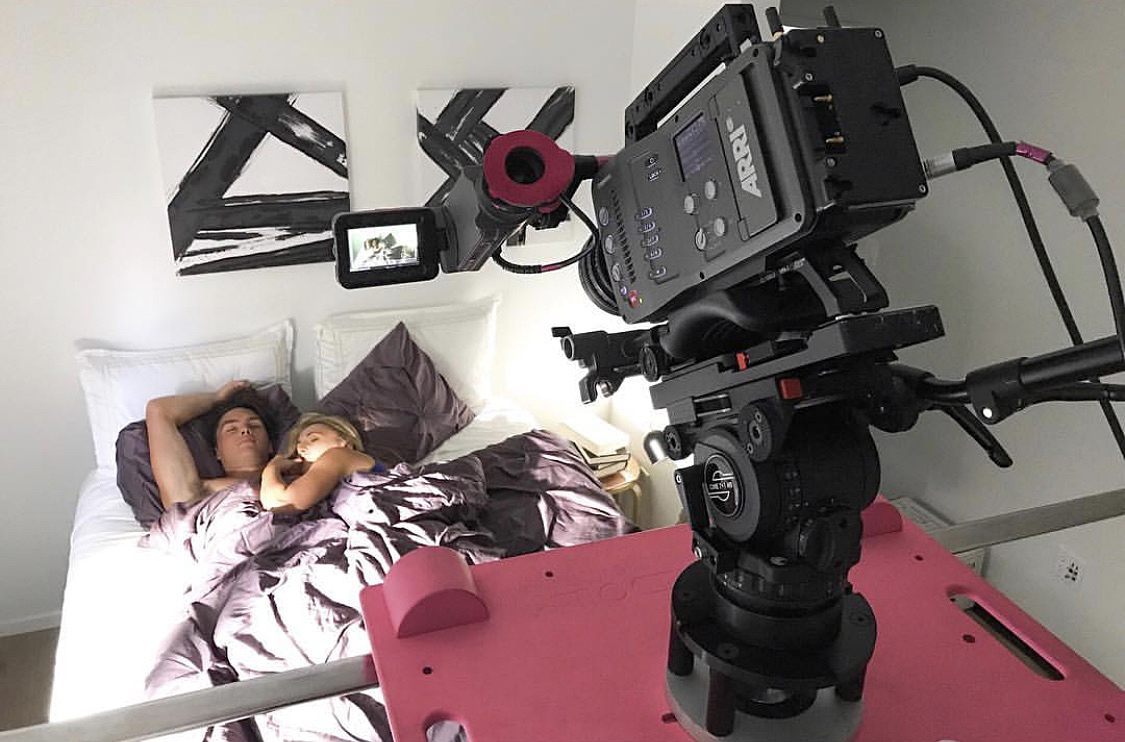
After a few days there, we moved on to Lila’s apartment — another location with no scout. The challenge in this setting was that it was a typical apartment full of white walls; it seemed like a white cyc, and we had three days of filming there. Our first step was to dress the walls as much as we could. The apartment’s real tenant became our de facto art department, offering to buy some bits of décor for us. That definitely helped fill the frame and add color/life to the home. Our next step was to keep light off the walls as much as possible. We strove to keep the talent away from the walls, and controlled spill when we lit them. Sometimes we leaned into the white walls, using them as a free bounce. This was particularly useful for scenes by the front door, another small space. I wanted to key most scenes from the off-camera side, which in this case was against a wall. By aiming a 300-watt Fresnel into the corner of the wall and ceiling, we got a nice, soft, top-back key light for the actors.
We had a 20mm, 24mm, 28mm, 55mm, 85mm and 135mm in the series of rehoused Canon FDs that Christopher Probst loaned us. The FDs had started out as still lenses before being rehoused as cine lenses, but since the 35mm FD [f/2] in that series was too slow for the rehousing, Christopher picked out a 35mm Leica Summilux-R (T1.4) that roughly matched the speed of the other FDs. The 55mm FD was our workhorse, with the 85mm right behind it.
We often think wide lenses distort faces in a harsh way and telephoto lenses are kinder, but it really depends on the face. Different face shapes will react to focal lengths differently, so it’s best to just put them to the test and assess the results. For example, after shooting a close-up of de Freitas with the 85mm, I saw that it “fattened” her face, and I quickly switched to the 55mm and moved the camera in closer. The 55mm was truer to the shape of her face and more flattering.
We also used Zeiss Super Speeds for some additional sequences.
Visually, one of my favorite scenes in the film is when Lila and Jason finally succumb to their desires. We lit the scene with tungsten lights and then set the Amira’s white balance to 6,500K to really warm it up. I used a 150-watt Arri Fresnel to imitate a practical in frame and extend its light a bit farther into the room to backlight the lovers. I aimed the 150 right at the lens to create some beautiful flares. We decided to shoot handheld, which helped to suggest the characters’ emotional freedom at that moment.
The final location of the shoot was the high school, which was actually too big for a change! In the script, the school is small, with about nine students in each class. At our location — an unused building at a school in Santa Monica — each classroom measured at least 20' x 20'. We cheated the size of the room, foreshortening it by moving the desks near the window and shooting into a corner. When we needed to shoot reverses or see the opposite side of the room, we moved the desks and chairs toward that side to make the room appear smaller.

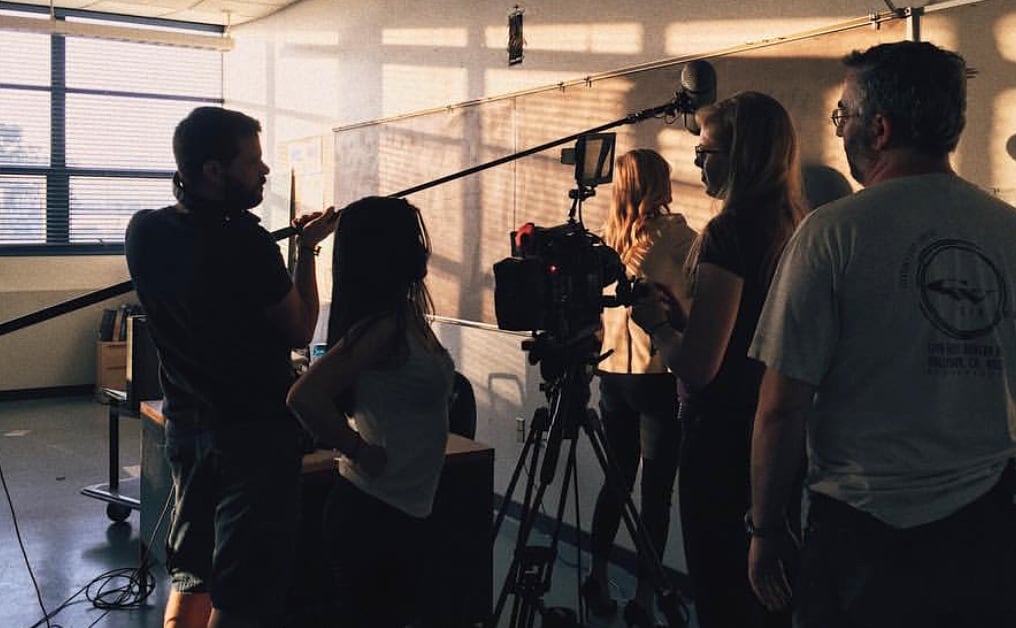
The school was our primary location, encompassing more than 1⁄3 of the story, so there were plenty of setups and only five days to get it all. What really saved us time-wise was that all the classroom scenes had similar lighting plans, and I kept the setups to a minimum. We turned off the fluorescent practicals overhead and adjusted the window blinds to direct the natural sunlight where we wanted it. In camera, we would establish a wide and then get the necessary coverage. It was vital to sacrifice some of the fancier shots in order to make our day and still tell the story. Another complication was that we had just one day with extras in the school, so we had to shoot partial scenes featuring angles with fewer characters first and save a lot of pickup shots for the final day, which also included a choreographed fight scene.
Because of a prior commitment, I was unable to shoot three days of our 21-day schedule, and I’m deeply grateful to Christopher Probst and Diego Gilly, the two cinematographers who came in to cover those days.
It’s easy to feel intimidated when you’re facing your first feature, and it’s especially daunting when you know you’ll have limited crew and resources. But “low budget” doesn’t have to look low budget. In my opinion, the most important technical considerations for the cinematographer are (in this order): lighting, lenses and then camera. And even when you don’t have all the lighting tools you want, you can achieve a really polished look if you’re careful about how you block scenes, where you place the camera and how you shape available light. Don’t be afraid to employ DIY solutions — no one sees what’s out of frame.
I can’t wait to get a full camera package from Panavision, a 10-ton truck of gear, and an array of SkyPanels — and when I do, it’s projects like Before the Dawn that will make me appreciate those luxuries even more.
